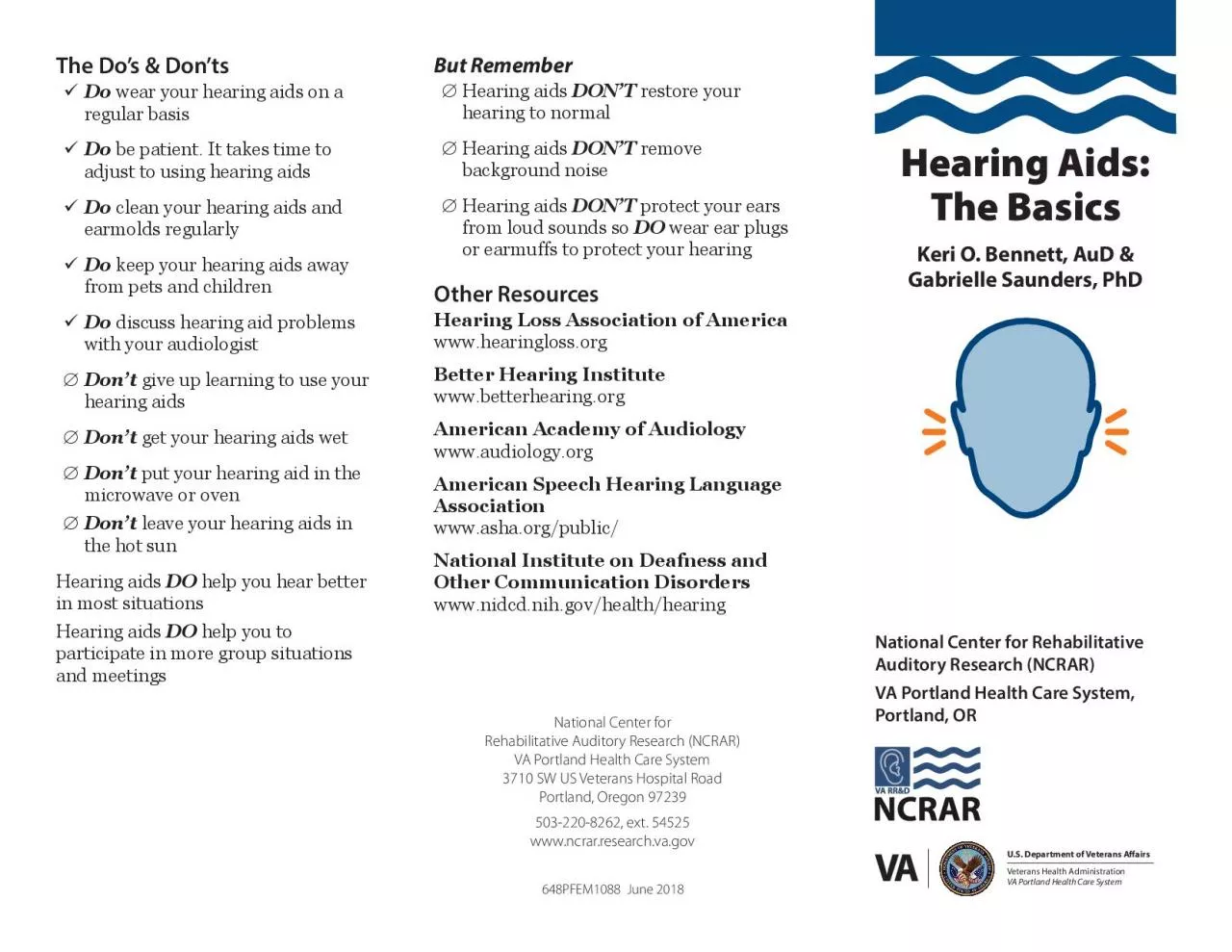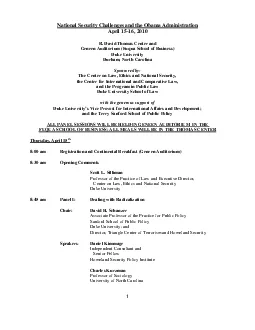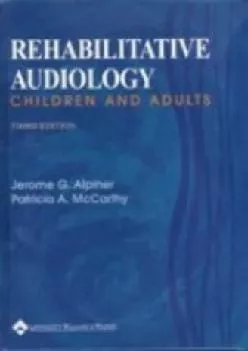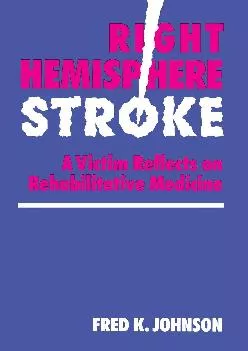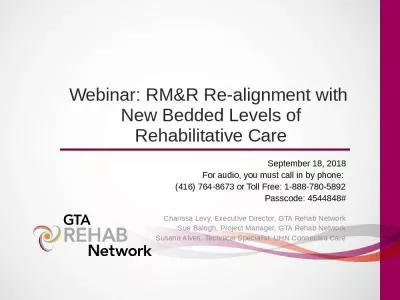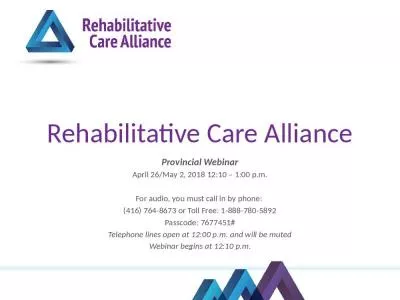PDF-National Center for Rehabilitative
Author : vivian | Published Date : 2022-10-28
Auditory Research NCRAR VA Portland Health Care System Portland OR Hearing Aids The Basics Keri O Bennett AuD Gabrielle Saunders PhD 648PFEM1088 June 2018 National
Presentation Embed Code
Download Presentation
Download Presentation The PPT/PDF document "National Center for Rehabilitative" is the property of its rightful owner. Permission is granted to download and print the materials on this website for personal, non-commercial use only, and to display it on your personal computer provided you do not modify the materials and that you retain all copyright notices contained in the materials. By downloading content from our website, you accept the terms of this agreement.
National Center for Rehabilitative: Transcript
Download Rules Of Document
"National Center for Rehabilitative"The content belongs to its owner. You may download and print it for personal use, without modification, and keep all copyright notices. By downloading, you agree to these terms.
Related Documents

